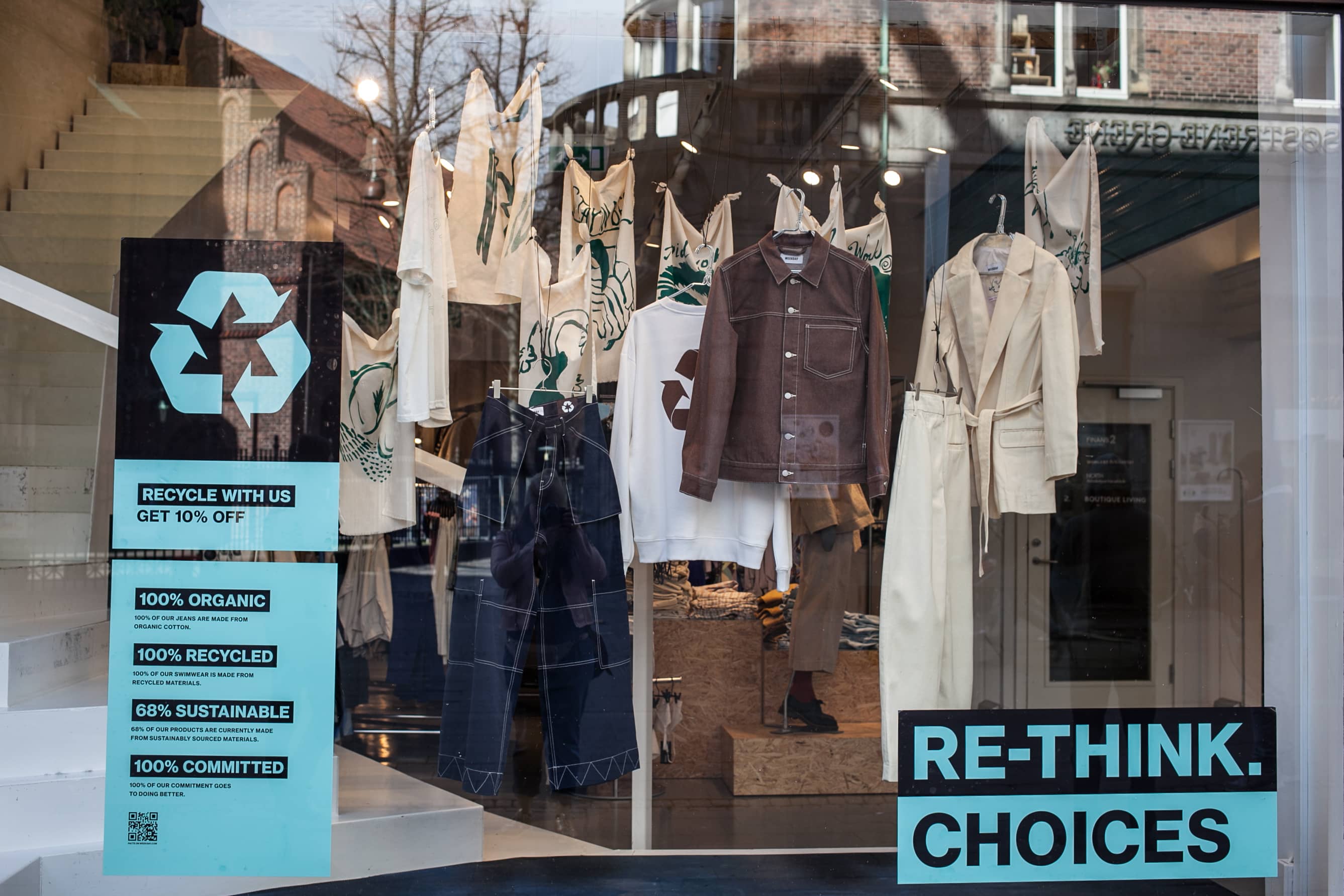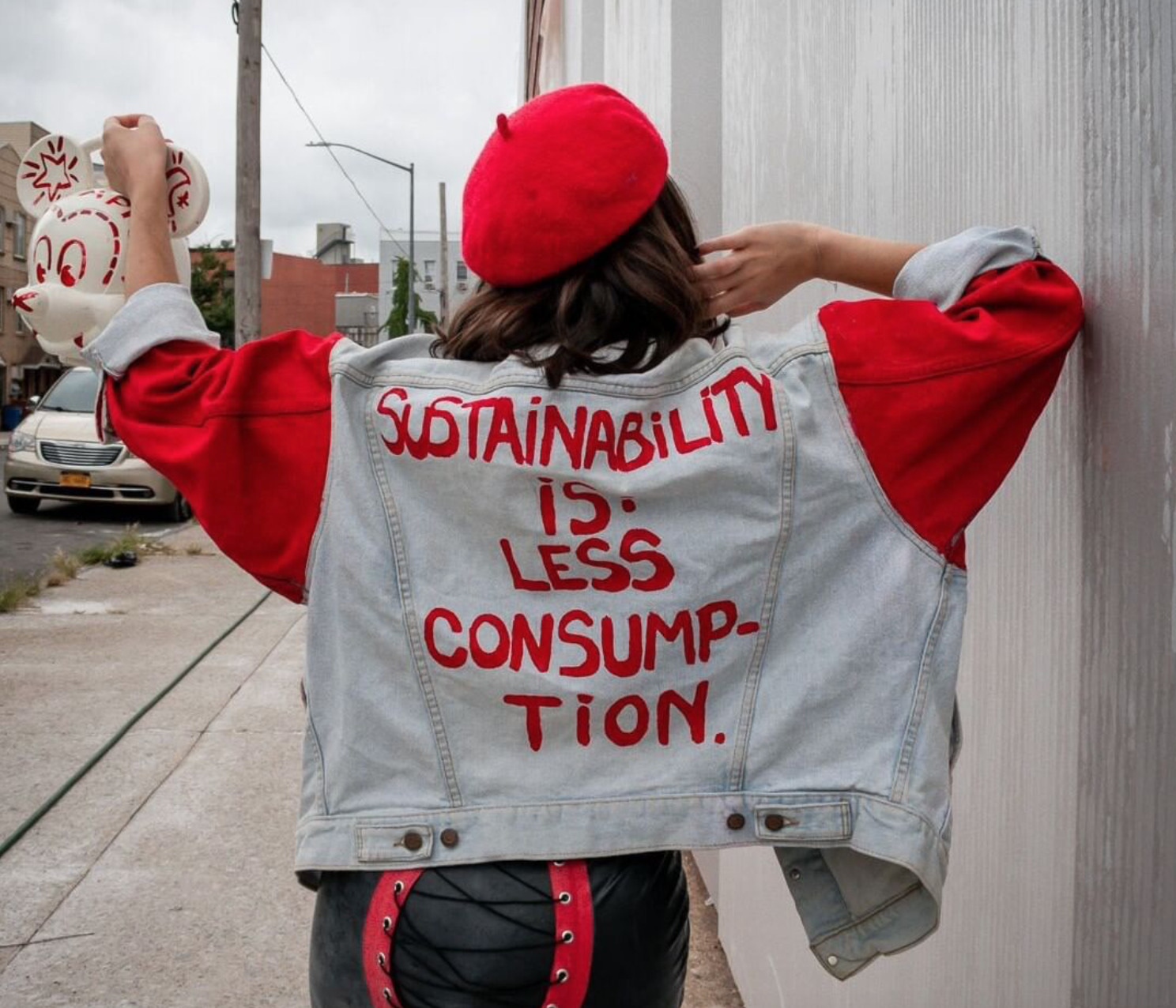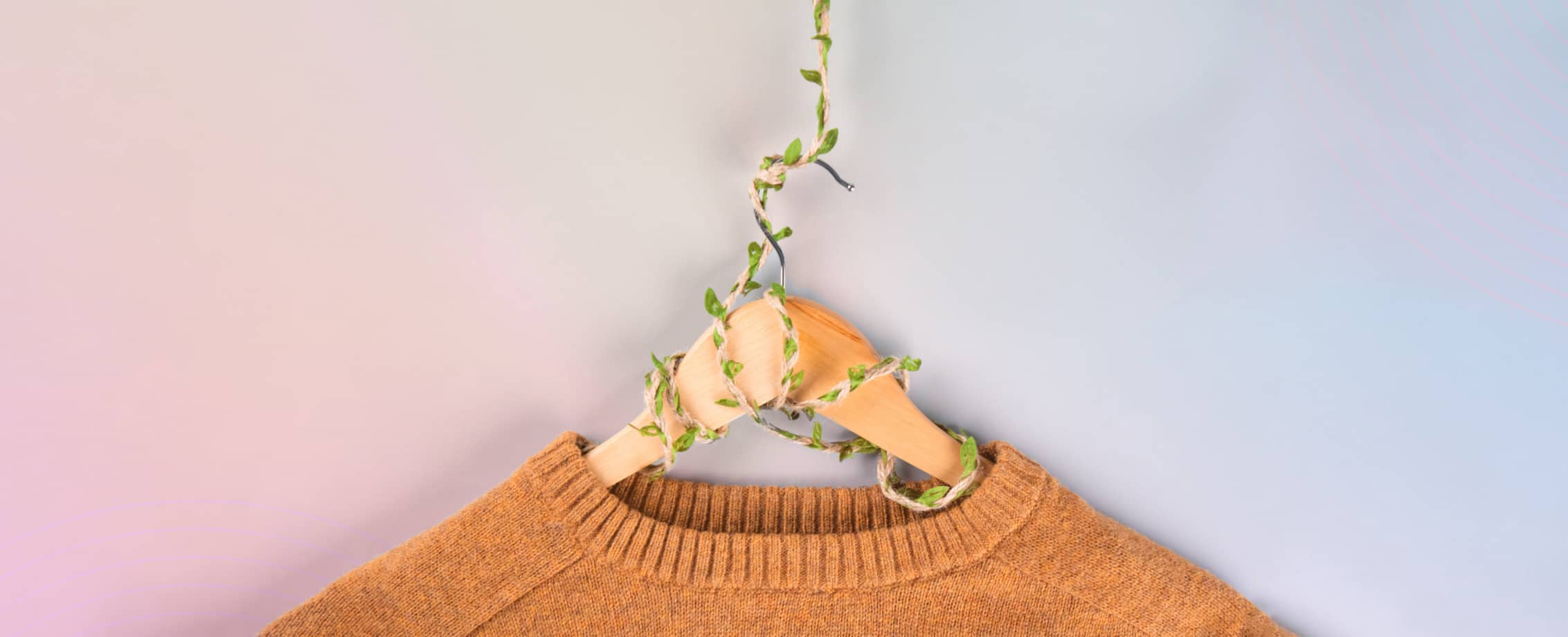The fashion industry is witnessing a significant shift towards sustainability, with consumers demanding more eco-friendly options. In 2025, apparel retailers need to keep up with sustainable fashion trends and implement innovative ideas to cater to environmentally conscious consumers. This article explores the sustainable fashion trends to watch in 2025 and provides valuable insights and ideas for apparel retailers. Additionally, we will highlight the role of 3DLOOK’s fit & sizing solutions, YourFit and Mobile Tailor, in helping retailers become more sustainable and eco-oriented.
The Rise of Sustainable Fashion
Consumer Demand for Sustainable Fashion
Consumer awareness and demand for sustainable fashion have been growing steadily. Today’s consumers are more conscious about the environmental and social impact of their purchasing decisions. They seek brands that prioritize sustainability and align with their values. Around 80% of global consumers are willing to pay more for sustainably produced or sourced goods, according to PwC’s 2024 Voice of the Consumer Survey. This shift in consumer behavior presents both challenges and opportunities for apparel retailers, emphasizing the need to incorporate sustainable practices and offer eco-friendly fashion options.

Sustainable Fashion Trends for 2025
Circular Economy and Upcycling
The circular economy and upcycling are sustainable fashion trends that will continue to gain momentum in 2025. The circular economy focuses on reducing waste and keeping products in use for as long as possible. Upcycling, a key aspect of the circular economy, involves transforming old or discarded garments into new and valuable products. By embracing upcycling, apparel retailers can reduce textile waste and offer unique, sustainable fashion options to consumers. Collaboration with upcycling initiatives or the creation of in-house upcycled collections can make a significant impact on the industry.

Ethical and Transparent Supply Chains
Ethical and transparent supply chains are crucial elements of sustainable fashion. In 2025, consumers will continue to demand greater visibility into the origins of their clothing. Apparel retailers should prioritize fair labor practices, ensure safe working conditions, and promote transparency throughout their supply chains. By partnering with suppliers who prioritize sustainability and social responsibility, retailers can build trust with their customers and contribute to a more sustainable fashion industry. This includes collaborating with certified fair-trade suppliers, conducting regular audits, and providing transparency regarding sourcing and manufacturing processes. By implementing ethical and transparent supply chains, apparel retailers can not only meet consumer expectations but also contribute to positive social and environmental impact.
Slow Fashion and Minimalism
Slow fashion and minimalism are movements that advocate for a shift away from fast fashion and encourage consumers to embrace a more mindful and sustainable approach to clothing. In 2025, these trends will continue to gain popularity as consumers prioritize quality over quantity. Slow fashion emphasizes investing in timeless and durable pieces that are designed to last, reducing the need for frequent purchases and minimizing waste. By curating collections that align with slow fashion principles and promoting minimalistic aesthetics, retailers can cater to conscious consumers seeking sustainable fashion choices.
As a minimalist trend, athleisure wear will continue to be in style due to the growing number of remote workers and an uptick in wellness-related activities. Along with the pandemic that prompted a lifestyle shift, more consumers prioritize comfort and well-being.
Consumers’ ongoing adaptation to evolving lifestyle patterns is reflected in research compiled by GlobalData, which reveals that the sportswear market is anticipated to witness steady growth until 2026.

Innovative Sustainable Materials
The fashion industry is witnessing exciting developments in sustainable materials. In 2025, innovative and eco-friendly fabrics will keep playing a significant role in sustainable fashion. These materials include recycled polyester, organic cotton, and plant-based alternatives like pineapple leather and mushroom-based textiles. By incorporating these innovative materials into their collections, apparel retailers can offer environmentally friendly options to consumers. These materials often have lower environmental footprints, require fewer resources, and reduce the reliance on traditional, resource-intensive textiles.
Aiming to support sustainability, the EU has enforced a new strategy for sustainable and circular textiles in March 2022. The strategy focuses on the need for the textile industry’s business models to incorporate circularity principles that would diminish waste and pollution and improve working conditions within the industry’s supply chains.

Tech-Enhanced Textiles and Design
The fusion of technology and fashion has given rise to smart textiles, offering an array of advanced features tailored to meet customers’ growing expectations.
Built with contemporary materials infused with nanotechnology or conductive threads, smart textiles boast remarkable attributes. They include temperature control to adjust to varying weather conditions, ensuring dryness and comfort during physical activities, and even activity monitoring for tracking performance metrics in sportswear and athleisure.
Other high-tech innovations predicted to skyrocket in 2025 fashion trends include the use of blockchain for transparency. The technology covers 3D printing for on-demand manufacturing, empowering brands to minimize waste and enhance efficiency.
Adoption of E-Textiles
Ongoing developments in e-textiles aim to create textiles devoid of traditional hard materials like metals, alloys, and plastics. The use of conductive fibers and yarns is gaining prominence over conductive inks and polymers. E-textiles have extensive applications, primarily in the health and wellness sector.
A surge in market innovations, ranging from textiles harnessing body movements for electricity generation to the enhancement of integrated sensors and circuits is rendering smart textiles more practical and versatile for everyday use.
Research conducted by Ameco Research forecasts that the e-textiles and smart clothing market will reach a substantial US $2.7 billion by 2030, demonstrating a robust Compound Annual Growth Rate (CAGR) of 32.3%.
This growth is propelled by the integration of electronic devices into clothing, ushering in an era of ‘smart’ garments capable of monitoring and responding to environmental changes or user inputs.
Digitization and Virtual Fittings
Digital technologies like AI-driven virtual assistants and immersive VR are revolutionizing the way consumers shop for clothing, and in 2025, the integration of digitization and virtual fittings will continue to shape sustainable fashion practices. Virtual fitting rooms and 3D body scanning technologies allow consumers to try on clothes virtually and determine the best fit without physically trying them on. This not only enhances the shopping experience but also reduces the carbon footprint associated with multiple shipping and return cycles. By adopting digitization and virtual fitting technologies, apparel retailers can provide a sustainable and convenient shopping experience while minimizing waste and optimizing inventory management.
Discover 3DLOOK's solutionsIncorporating Sustainable Fashion Ideas in Retail Businesses
Implementing Sustainable Practices in Operations
Apparel retailers can contribute significantly to sustainability by implementing eco-friendly practices in their day-to-day operations. This includes adopting energy-efficient lighting and appliances in stores, optimizing water usage, and reducing packaging waste. Retailers can also explore renewable energy sources and implement recycling and waste management systems. By prioritizing sustainability in their operations, retailers can reduce their environmental impact and set an example for the industry.

Curating Sustainable Fashion Collections
To meet the growing demand for sustainable fashion, retailers can curate collections that prioritize ethical sourcing and eco-friendly materials. This involves collaborating with sustainable brands or developing their own sustainable lines. By selecting garments made from organic, recycled, or upcycled materials, retailers can offer consumers a range of sustainable options. They can also emphasize transparency in the supply chain by providing information about the sourcing and production processes. Curating sustainable fashion collections helps retailers cater to conscious consumers and contribute to the greener fashion industry.
Educating Customers about Sustainability
One of the key responsibilities of apparel retailers is to educate their customers about sustainability in fashion. By leveraging various channels such as social media, blogs, and in-store events, retailers can raise awareness and provide information on sustainable practices, materials, and brands. Engaging customers through educational content helps them make more informed purchasing decisions and encourages them to support sustainable fashion. Retailers can also collaborate with influencers, sustainable fashion advocates, and organizations to amplify their message and create a wider impact.

The Role of 3DLOOK’s Fit & Sizing Solutions in Sustainable Fashion
Introducing 3DLOOK’s YourFit and Mobile Tailor
In the pursuit of sustainability, apparel retailers can benefit from incorporating 3DLOOK’s fit & sizing solutions into their operations. YourFit and Mobile Tailor are innovative solutions that offer accurate body measurements for retailers and personalized size recommendations to shoppers, ultimately reducing the environmental impact of returns and improving the overall shopping experience. Both solutions are powered by 3DLOOK’s patented advanced AI mobile body scanning technology.
YourFit empowers shoppers with the assurance of knowing precisely how a specific item will look and fit on their body, enabling confident purchasing decisions. This not only enables them to discover and keep clothing they genuinely adore but also reduces the environmental impact caused by returning unwanted items. By integrating YourFit into their online platforms, apparel retailers can enhance customer satisfaction and reduce the number of returns and exchanges due to size issues. This not only saves costs for retailers but also reduces the environmental impact associated with reverse logistics and garment waste.
Mobile Tailor is a digital body measuring solution designed for companies that need accurate measurements of their customers for their on-demand or custom apparel businesses. Mobile Tailor enables a simple way to digitize measurement capture so that companies can receive more accurate and consistent measurements quickly whether their customers are purchasing in-store or online. Mobile Tailor further reduces the need for wasteful alterations helping to drive down the carbon emissions associated with shipping and returning items that don’t fit. By implementing Mobile Tailor, brands can provide a convenient and sustainable shopping experience, meeting the evolving needs of digital-savvy consumers.
Benefits of Fit & Sizing Solutions for Retailers
The integration of fit & sizing solutions like YourFit and Mobile Tailor offers several benefits for apparel brands and retailers. Firstly, it improves customer satisfaction by ensuring a better fit and reducing size-related issues. When customers receive clothing that fit them well, they are more likely to be satisfied with their purchases and less likely to return them. This not only spares retailers from the expenses associated with returns but also mitigates the environmental footprint stemming from redundant transportation and packaging.
Secondly, fit & sizing solutions contribute to sustainability efforts by reducing textile waste. When customers receive accurate size recommendations, they are more likely to order the right size from the start, minimizing the need for returns and exchanges. This reduces the amount of clothing that goes to waste or ends up in landfills. By optimizing the fit process, fit & sizing solutions support the circular economy and promote a more sustainable fashion industry.
Moreover, fit & sizing solutions provide retailers with valuable data and insights. By analyzing customer body measurements and fit preferences, retailers can gain a deeper understanding of their target audience and tailor their collections and inventory accordingly. This data-driven approach improves inventory management, reduces overstocking, and minimizes the need for markdowns and clearance sales, which can lead to waste and financial losses.
👉 Check out how leading brands are achieving unbelievable results using 3DLOOK’s fit & sizing solutions
How Fit & Sizing Solutions Promote Sustainability
Fit & sizing solutions play a significant role in promoting sustainability in the fashion industry. Firstly, these solutions reduce the likelihood of returns and exchanges by accurately determining the correct size for each customer. This reduces the transportation, packaging, and labor associated with reverse logistics, minimizing the carbon footprint of the retailer’s operations.
Secondly, fit & sizing solutions contribute to a more sustainable approach to production. By providing retailers with accurate size data, these solutions enable brands to optimize their manufacturing processes, reducing the risk of overproduction and excess inventory. This helps to prevent wasteful practices and align production with actual customer demand, ultimately reducing resource consumption and minimizing environmental impact.
Additionally, fit & sizing solutions support the shift towards a more digital and efficient shopping experience. By offering virtual try-ons and accurate size recommendations, retailers can enhance the online shopping process, eliminating the need for customers to order multiple sizes or make returns due to sizing issues. This reduces the carbon emissions associated with transportation and logistics, promoting a more sustainable and eco-friendly fashion industry.
Final Thoughts
As the fashion industry continues to evolve, sustainable fashion trends are gaining momentum. Apparel retailers have a unique opportunity to embrace these trends and incorporate sustainable practices into their operations. By focusing on circular economy principles, ethical supply chains, slow fashion, innovative materials, and digitization, retailers can meet the growing consumer demand for sustainable fashion and contribute to a more eco-friendly industry.
Moreover, integrating fit & sizing solutions like 3DLOOK’s YourFit and Mobile Tailor can further enhance retailers’ sustainability efforts. These solutions offer accurate size recommendations to customers, reducing the need for returns and exchanges and enable brands to fully leverage on-demand production by accurately meeting the specific body measurement requirements, thus driving the advancement of slow fashion and tailor-made clothing. By implementing fit & sizing solutions, retailers can optimize their operations, minimize overproduction, and promote a more sustainable fashion industry.
FAQs
What are some sustainable fashion ideas for apparel retailers?
Sustainable fashion ideas for retailers include embracing circular economy practices such as upcycling and recycling, promoting ethical and transparent supply chains, curating slow fashion collections and on-demand production models, and incorporating innovative sustainable materials.
How can retailers implement sustainable practices in their operations?
Retailers can implement sustainable practices by optimizing energy consumption, minimizing water usage, adopting eco-friendly packaging, and implementing recycling and waste management systems.
How do fit & sizing solutions promote sustainability in fashion?
Fit & sizing solutions deliver accurate body measurements, reduce returns and exchanges which minimize the carbon footprint associated with reverse logistics. They also optimize production and inventory management, reducing overproduction and excess inventory.
What are the benefits of fit & sizing solutions for retailers?
Fit & sizing solutions drive revenue by improving customer satisfaction, reducing returns and exchanges, providing valuable data insights, and contributing to a more sustainable and efficient shopping experience.
How can retailers educate customers about sustainability in fashion?
Retailers can educate customers through marketing campaigns, social media content, in-store events, and collaborations with influencers and sustainable fashion advocates. Providing information on sustainable practices, materials, and brands helps customers make informed choices.
Remember, sustainability is not just a trend but a commitment to a better future. By embracing sustainable fashion trends and incorporating innovative solutions like 3DLOOK’s YourFit and Mobile Tailor, apparel retailers can be at the forefront of the sustainable fashion movement while meeting the needs and expectations of environmentally conscious consumers.



